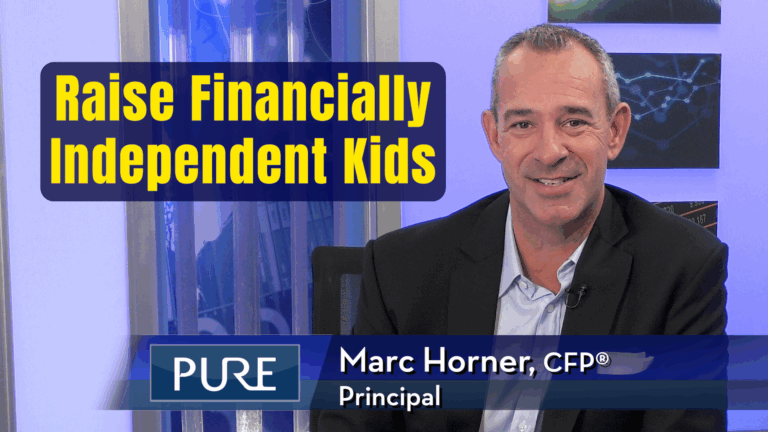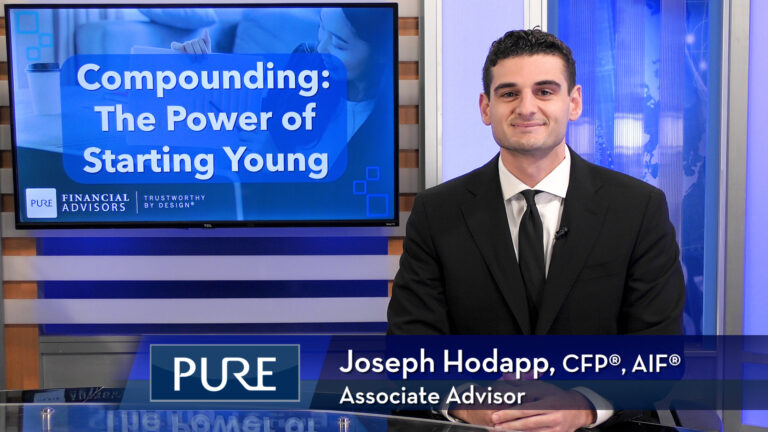Are you curious about how the One Big Beautiful Bill Act may affect the taxes on your Social Security benefits? Pure Senior Financial Advisor, Amy Cattelino, CFP®, AIF®, breaks down the recent changes and explains what they could mean for you.
Transcript
There’s a lot of information out recently about Social Security and the recent tax legislation that passed with the One Big Beautiful Bill Act, or OBBBA. Let’s break down what has changed, what hasn’t changed, and what this could mean for you.
First off, the taxation laws on if or if not Social Security is taxed have not changed. Before OBBBA and currently, a formula called Provisional Income is used to calculate the tax liability on Social Security benefits. The formula depends on your Social Security benefits, other income, tax filing status, and other factors. High level, the calculation is your modified adjusted gross income, minus your Social Security benefits, but then add back half of your Social Security. You can then take this number and use these charts to calculate how much of your Social Security is or is not subject to taxation:
| Single | Married | Taxable |
| ≤ $25,000 | ≤ $32,000 | 0% |
| $25,001 – $34,000 | $32,001 – $44,000 | Up to 50% |
| > $34,000 | > $44,000 | Up to 85% |
A big thing to keep in mind is that these thresholds for provisional income have not been adjusted for inflation since put into law in 1983, leading to more people’s Social Security benefits being subject to taxation as inflation continues to grow wages over time. This was the intent of the law, is that over a long period of time there would be no thresholds and all Social Security benefits would be subject to taxation. For example in 1994, around 12.2% of benefits paid were subject to taxation. That number has grown to 38.2% as recently as 2022.
What has changed is there is a new deduction that is designed to reduce the tax burden on Social Security called the Senior Deduction. Those that are age 65 and older are eligible, and the deduction is effective for tax years 2025 through 2028, meaning it will go away in 2029 unless there is a law change. Those that are eligible may claim an additional deduction of $6,000, in addition to the standard deduction or itemized deductions.
The $6,000 is per individual, meaning a married couple is eligible for up to $12,000 married if both people qualify. However, there are income limitations and those with higher income can phase out and potentially lose the benefit.
If you’re 65 or older between now and 2028, it’s critical to revisit your income to determine how much of the Senior Deduction you are or are not eligible for. Consider how you structure income if retired, what accounts you take distributions from will have more of an impact on your taxes the next few years due to this new deduction. If under age 65, consider proactive planning moves to help minimize future income, like Roth conversions or realizing capital gains.
To summarize, OBBBA did not change the taxation of Social Security benefits; up to 85% of your Social Security may still be taxable depending on your other income. OBBBA did not abolish taxation on Social Security. The new Senior Deduction creates a planning opportunity to revisit income to see how to optimize taxation now and in the future.
If you want to talk about how this impacts you and your tax planning and retirement planning, reach out to us and we’ll get you scheduled for a free financial assessment to review how these law changes impact you directly.
Subscribe to our YouTube channel.
IMPORTANT DISCLOSURES:
• Investment Advisory and Financial Planning Services are offered through Pure Financial Advisors, LLC, a Registered Investment Advisor.
• Pure Financial Advisors LLC does not offer tax or legal advice. Consult with your tax advisor or attorney regarding specific situations.
• Opinions expressed are subject to change without notice and are not intended as investment advice or to predict future performance.
• Investing involves risk including the potential loss of principal. No investment strategy can guarantee a profit or protect against loss in periods of declining values.
• All information is believed to be from reliable sources; however, we make no representation as to its completeness or accuracy.
• Intended for educational purposes only and are not intended as individualized advice or a guarantee that you will achieve a desired result. Before implementing any strategies discussed you should consult your tax and financial advisors.
• Pure Financial Advisors, LLC, is not affiliated with any government agency, including, but not limited to the Social Security Administration.
CFP® – The CERTIFIED FINANCIAL PLANNER® certification is by the CFP Board of Standards, Inc. To attain the right to use the CFP® mark, an individual must satisfactorily fulfill education, experience and ethics requirements as well as pass a comprehensive exam. 30 hours of continuing education is required every 2 years to maintain the certification.
AIF® – Accredited Investment Fiduciary designation is administered by the Center for Fiduciary Studies fi360. To receive the AIF Designation, an individual must meet prerequisite criteria, complete a training program, and pass a comprehensive examination. Six hours of continuing education is required annually to maintain the designation.













